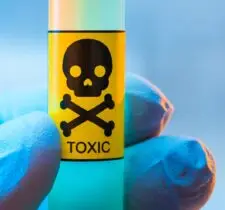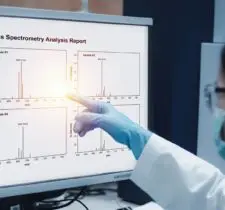Forensic toxicology involves analyzing biological samples to determine the presence and concentration of drugs, alcohol, and other toxic substances in the human body. These tests are crucial in criminal investigations, accident reconstructions, and medicolegal examinations. This discussion will explore the key methods and techniques used in forensic toxicology, including sample collection, preservation, and analysis.
Sample Collection and Preservation
The first step in forensic toxicology is the collection of biological samples from the deceased or living subjects. These samples typically include blood, urine, hair, tissue, and oral fluid. Other bodily fluids and tissues may also be analyzed depending on the circumstances of the case.
Blood Samples:
Blood is one of the most analyzed specimens in forensic toxicology because most substances need to enter the bloodstream to have a pharmacological effect. The blood’s movement through the body allows these substances to be distributed to different key organs, such as the brain, where they may exit the blood to produce their effect. Blood specimens are collected using sterile needles and tubes, with care taken to prevent contamination and degradation. Blood samples are often stored at room temperature for short periods, such as shipment to a laboratory, and refrigerated for longer periods, such as once they arrive and are stored at the laboratory.
Urine Samples:
Urine is another valuable specimen, as it can provide a longer insight into recent drug use or exposure. Urine is often the last liquid biological specimen that a drug may be found before it is excreted from the body. Urine samples are collected in clean containers and must be sealed and stored properly to prevent degradation of the analytes. They are stored at room temperature for short periods but must be refrigerated for longer storage.
Hair Samples:
Hair can provide a historical record of drug or toxin exposure. Segments of hair close to the scalp are typically analyzed. These segments can be segmented by time periods, allowing toxicologists to determine when the person was exposed to the substances. Hair samples do not require refrigeration.
Tissue Samples:
Tissue samples, such as liver, kidney, and brain tissue, can be important in cases involving suspected poisoning or exposure to specific toxins. These samples are preserved in a frozen state that minimizes decomposition and contamination. Tissue samples require refrigeration for short storage periods but need to be frozen if stored for longer periods.
Oral Fluid:
Oral fluid, often called saliva, is the watery substance produced by salivary glands in the mouth. This biological specimen may contain traces of drugs if the person has used them recently. A collection device is placed in an individual’s mouth to collect the oral fluid, usually under the tongue or along the cheek. Oral fluid samples can remain unrefrigerated for shipment but should be refrigerated once they arrive and are inventoried at the laboratory.
Once collected, these biological samples must be preserved and documented to maintain their integrity and chain of custody. Proper storage conditions, temperature control, and security measures are essential to ensure the integrity and reliability of test results.
Analytical Techniques
Forensic toxicologists employ various analytical techniques to detect and quantify toxic substances in biological samples. The choice of method depends on the specific substances of interest, the nature of the sample, and the required sensitivity and accuracy. A forensic toxicology test method usually begins by isolating or extracting substances from the biological matrix. The extracted substances are then analyzed using different techniques to allow for their detection, identification, and quantitation.
Some common extraction and analytical techniques used in forensic toxicology follow.
Common Extraction Techniques:
- Solvent Extraction: Solvent extractions, often called liquid-liquid extractions, involve mixing the biological sample with a water-immiscible solvent to dissolve the compounds of interest from the rest of the sample. For more efficient solvent extraction, pH adjustments can dictate the compounds that favor the solvent over the original matrix. And for cleaner extracts, additional pH and solvent changes are made through a process known as “back extraction”. Solvent extractions require more sample manipulation compared to other techniques and thus may be more time-consuming. However, solvent extractions are easier to perfect, and a laboratory can use the same general procedure to capture many different compounds.
- Solid-Phase Extraction: Solid-phase extraction (SPE) relies on a solid sorbent material packed into a cartridge or column. The biological sample containing the compounds of interest is passed through the column. The sorbent selectively retains the analytes while unwanted substances are washed away. After this, the retained analytes are eluted from the sorbent using a suitable solvent. It is easy to automate some or all of the SPE process; however, it has a higher cost than other extraction techniques.
- Supported Liquid Extraction: Supported liquid extraction (SLE) can be viewed as a hybrid approach to solvent extraction and solid-phase extraction techniques. The biological sample is passed through a column packed with an inert material. However, unlike SPE, the analytes and matrix components (like proteins and phospholipids) are retained in the cartridge. The analytes are then selectively eluted from the inert material using a water-immiscible solvent, while the matrix components are left in the cartridge. As with SPE, SLE can also be automated, but this comes at a higher cost.
- Headspace Extraction: Headspace extraction is particularly useful for separating volatile compounds, such as ethanol, from the biological matrix. The biological sample is placed into a vial and sealed to ensure it is gas-tight. The vial is heated to a specific temperature. As the vial is heated, the volatile compounds within the biological sample vaporize and reach a state of equilibrium in the headspace (the space between the top of the sample and the vial cap). A portion of the vapor in the headspace is sampled for analysis. Headspace extractions are limited to volatile compounds; however, the technique is inexpensive compared to other extraction techniques.
Common Analytical Techniques:
- Immunoassays: Immunoassays are highly specific tests that use antibodies to detect and quantify drugs or toxins in biological fluids. Enzyme-Linked Immunosorbent Assay (ELISA) is an example of an immunoassay technique frequently used in toxicology.
- Gas Chromatography (GC): GC is used to separate and analyze volatile components. It can help identify or provide a substance’s concentration in the tested biological sample. GC with a flame-ionization detector is often used to analyze alcohol in blood, urine, or other biological specimens.
- High-Performance Liquid Chromatography (HPLC): HPLC separates and quantifies compounds based on their chemical properties. It is versatile and can analyze various substances, including drugs, toxins, and metabolites.
- Gas Chromatography-Mass Spectrometry (GC-MS): GC-MS is one of the most widely used techniques in forensic toxicology. It separates and identifies compounds based on their mass and chemical structure. This method is particularly effective for detecting drugs, alcohol, and volatile compounds.
- Liquid Chromatography-Mass Spectrometry (LC-MS): LC-MS is suitable for analyzing a broader range of compounds, including polar and nonpolar substances. It is often used to detect drugs, pharmaceuticals, and their metabolites.
Interpretation of Results
Interpreting forensic toxicology results requires expertise and careful consideration of many factors, including the type and concentration of substances detected, the timing of sample collection, and the individual’s medical history. Results may be reported as positive or negative, and quantitative data can help determine the level of exposure or intoxication.
Toxicologists must also consider factors such as tolerance, the presence of multiple substances, and the potential for post-mortem redistribution, where the concentration of a substance in the blood may change after death due to simple diffusion and tissue permeability.
Legal Implications
Forensic toxicology results often play a crucial role in legal proceedings. They can help establish whether a crime has occurred, assist in determining liability in accidents, or inform medicolegal interpretations, such as the cause of death. The reliability of toxicology results is of the utmost importance, and forensic toxicologists must adhere to strict quality assurance and quality control protocols to ensure accurate and reproducible findings.
Challenges in Forensic Toxicology
Forensic toxicology is not without its challenges. Some substances may be present at very low concentrations, requiring highly sensitive analytical methods. Interpretation can also be complex, especially when multiple substances are involved. Additionally, the field evolves as new drugs emerge, necessitating ongoing research and method development.
Conclusion
Forensic toxicology is a vital branch of forensic science that employs various methods and techniques to detect and quantify drugs, alcohol, and other substances in biological samples. These analyses are critical for legal and safety purposes, helping to uncover the truth in criminal investigations, accident evaluations, cause of death investigations, and workplace safety. The accuracy and reliability of forensic toxicology results are essential for ensuring justice and the well-being of individuals involved in these cases. Advances in analytical technology and continued research will further enhance the future capabilities of the field.







